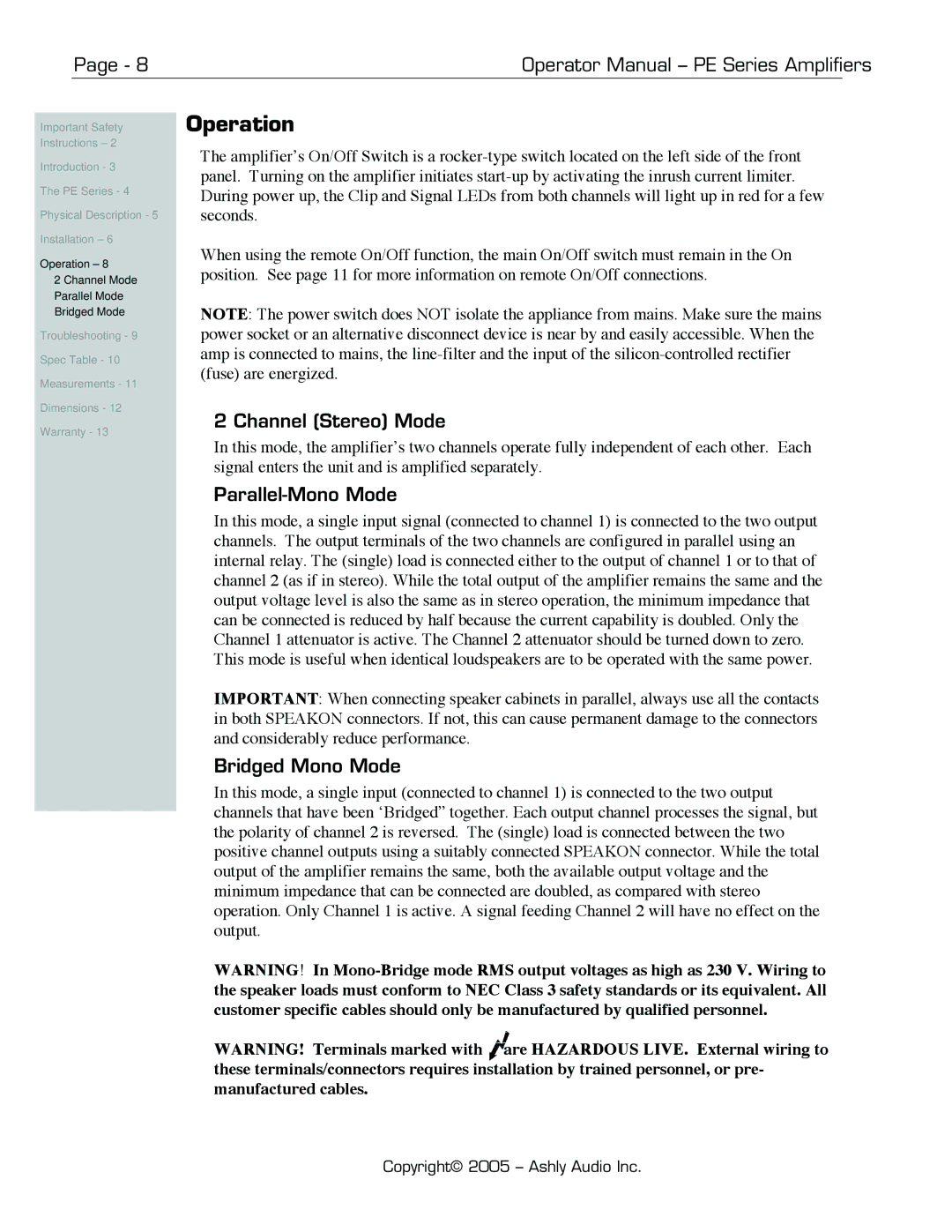PE-Series specifications
The Ashly PE-Series is a premium range of signal processing devices designed for professional audio applications. Known for its robust construction and advanced technology, the PE-Series stands out in various environments—from live sound settings to fixed installations. These devices are widely recognized for their high-quality performance, versatility, and ease of use.One of the main features of the Ashly PE-Series is its exceptional audio quality. The series utilizes high-performance analog and digital components to ensure clear, precise sound reproduction. This quality is further enhanced by low-noise operation and high-headroom designs that minimize distortion, even at high output levels. As a result, users can expect transparent sound with complete fidelity.
The PE-Series includes various models, each tailored for specific applications. These models often have multiple channels, allowing for complex audio routing and processing. One of the key technologies incorporated into the PE-Series is the integrated DSP, which provides advanced processing capabilities. This feature enables a range of functions such as equalization, dynamic processing, and crossover functionality, allowing users to customize their audio experience to meet specific requirements.
Another noteworthy characteristic of the PE-Series is its intuitive user interface. The devices come equipped with an easy-to-read LCD display and user-friendly controls, streamlining the setup and adjustment processes. This design ensures that both seasoned audio engineers and novices can operate the devices effectively, reducing the learning curve often associated with professional audio equipment.
Durability is a cornerstone of the Ashly PE-Series. The rugged metal chassis protects the internal components from physical damage, making these devices suitable for both mobile and permanent installations. Additionally, the units are designed to manage heat efficiently, which contributes to their reliability during extended use.
Connectivity options are plentiful, with various input and output configurations available across the PE-Series models. This flexibility allows seamless integration into existing audio systems, whether analog or digital, ensuring that users have the necessary tools for optimal performance.
In summary, the Ashly PE-Series is an impressive line of audio signal processors, distinguished by its audio quality, advanced DSP technology, user-friendly interface, and robust durability. These characteristics make it an ideal choice for professionals seeking to enhance the sound quality in live and installed settings. Whether you’re looking to refine your audio system or expand your sound processing capabilities, the Ashly PE-Series is certainly worth considering.

